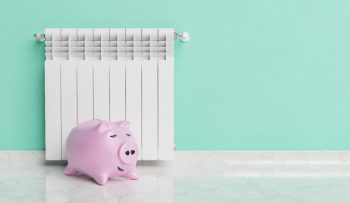A home’s heating system malfunctions every year, not only in the winter. I’ve compiled a list of the top ten ways to keep you and your family warm in this post.
- Ensure Radiators are clear from large objects
It’s all well and good to have your Central Heating set to the highest setting on your thermostat. However, if anything like a sofa, a nest of drawers, or a bulky item is obstructing it, all of that nice warm deliciousness is just money and, more importantly, heat going out the window! The primary function of a radiator is to heat the space as effectively as possible. But how can they accomplish that if they’re trapped behind a sofa with limited air flow? So, my first recommendation is to make sure that all of your radiators are located away from huge things that might potentially block them, as well as in a spot inside each room where there will be adequate air movement and no obstructions.
- Use the correct Curtains
Most men despise the idea of spending hours with their wives and partners at home improvement stores shopping for the “perfect” drapes. However, sorry fellas, but the ladies are correct! Thermal or heavy curtains can help your heating systems run more efficiently. By closing them as early as nightfall or sunset, you can keep valuable air from escaping via microscopic gaps in window seals and frames.
- Reduce Drafts
Unfortunately, we are not discussing traditional Irish Stout on this occasion. But it’s the horrible breaths of air that take us all off guard when we emerge from the shower. Keeping your home draft-free might save you up to $55 each year! The best ways to keep draughts at bay in your house are to ensure that all of your windows are properly sealed, that any skirting boards are flat with the base of the walls, and that all of your doors, keyholes, and door frames are properly fitted. If you see any gaps, Caulk is malleable and may be used to fill any gaps.
- Loft Insulation
A thoroughly insulated loft will not only improve the efficiency of your heating system. Loft insulation functions as a blanket, keeping heat from escaping via small holes. Insulation not only keeps you warm in the winter, but it also keeps you cool in the summer, lowering your heating expenditures all year. It is also a fairly rapid operation that often takes less than a day to instal and is well worth the investment because it may save you up to $180 each year.
- Cavity Wall Insulation
Keeping with the insulating theme, ensuring that your house is adequately insulated with cavity wall insulation provides comparable benefits as loft insulation. It functions similarly to a blanket, except it stops heat from escaping via holes in your outer walls. It accomplishes this by injecting a brown liquid into the gaps with minimal mess and bother.
- Invest in Double Glazing if necessary
Double glazing is standard in most modern homes. However, if you do not own a property, it will be money well spent! It keeps heat from escaping via worn out glass and minor cracks inside the frame’s seal. However, it is not just the glass that must be examined. Never overlook the casing. This is very important in the avoidance of heat.
- Boiler Replacement / Installation
It may seem apparent, but having a boiler built and fitted correctly will cost you money in the near term, but will save you money in the long run. There are several firms in your area that specialise in boiler installations. If your boiler is 15 years old or older, you should seriously consider replacing it.
It’s all well and good to have a new boiler installed, but make sure it’s the proper sort of boiler. Having a controllable condensing boiler gives you greater responsibility and control over your heating and how much you spend. You may save up to $310 every year!
- Shower Times / Water Usage
Keep track of how much hot water you use. If you have an electric shower, try to keep each one to no more than 10 minutes. If you take a longer shower, consider purchasing a shower monitor to keep track of how much water your household consumes.
- Central Heating Timers
This is an excellent method to keep track of how much money you spend on heating your house. Most modern boilers come with controllers or timers that can be configured with a new system. If you don’t have one, DON’T PANIC; you don’t need to go out and get a new boiler. You may purchase them online and have a local plumber instal and configure them for you.
Timers allow you to programme when you want your central heating to turn on. Most households have them set to turn on a few hours before you wake up in the morning, turn off when everyone is at work or school, turn on an hour or two before everyone gets home, turn off before going to bed, and then resume the cycle. However, each homeowner is unique and will have different preferences, which is completely great.
- Hot Water Cylinder Jackets, Pipe Work and Immersion Insulation
The loft and cavity walls are not the only areas of a home that require insulation. Check that the pipework and hot water immersion tank have been insulated. Having the immersion tank properly insulated will keep your hot water hotter for longer, and having the pipe work insulated will save you up to $15 each year.
An excellent thing to ask yourself is, “Have we insulated our hot water cylinder?” If not, why not? Giving your cylinder a jacket may seem foolish, but it may save you up to $45 each year.
For all of your Plumbing and Heating needs, get in touch with J.O. Plumbing. The expert Melbourne Plumber who has a variety of services to offer.




